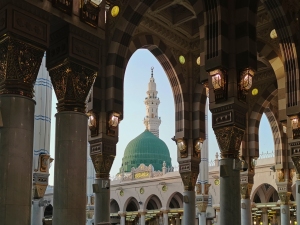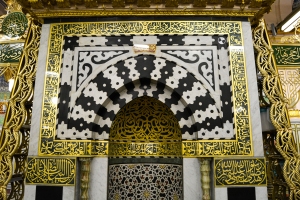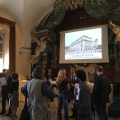In the very heart of Medina, the second holiest city in Islam, Al-Masjid an-Nabawi is a living testament to the early days of Islam. Known as the Prophet’s Mosque, it is one of the three holiest sites in the Islamic world, alongside the Haram Al-Sharif in Mecca and the Al-Aqsa Mosque in Jerusalem. For millions of Muslims, a visit to this site is a deeply transformative experience, often forming part of the Hajj or Umrah pilgrimage.
Origins and early history
Al-Masjid an-Nabawi’s history is inseparable from the life of the Prophet Muhammad himself. In 622 CE, the Prophet migrated from Mecca to Medina, escaping persecution and seeking a secure base for the growing Muslim community. Upon his arrival, one of his first acts was to establish a mosque—a simple, open-air structure of palm trunks and mud brick that served as a place of worship and as a community center, court, and school.
Tradition holds that the Prophet participated in the mosque’s construction, laboring alongside his companions as they laid the first bricks. The early structure included a shaded area known as the Suffah, where the Prophet’s closest followers, many of them without homes or families in Medina, would gather for study and prayer.

Architectural evolution
From these humble beginnings, the mosque has grown into one of the largest and most architecturally significant religious complexes in the world. Over the centuries, it has been repeatedly expanded, reflecting the artistic and architectural styles of the Umayyad, Abbasid, Mamluk, Ottoman, and modern Saudi eras.
- The first expansion (Umayyad Era)
In 707 CE, the Umayyad Caliph al-Walid I oversaw the mosque’s first major renovation, adding stone walls, a flat roof supported by stone columns, and the first minarets. This transformed the mosque into a more permanent and imposing structure, setting the tone for future expansions.
- Mamluk and Ottoman contributions
The iconic Green Dome, now synonymous with Al-Masjid an-Nabawi, was added by the Mamluk Sultan Al-Mansur Qalawun in 1279 CE. The dome, originally built over the house of the Prophet’s wife Aisha, marks the location of the Prophet’s tomb, along with the final resting places of the first two Caliphs, Abu Bakr and Umar. The current green color dates to an 1837 renovation by the Ottoman Sultan Mahmud II, a striking symbol known throughout the Muslim world.
- Modern Saudi expansions
The mosque has continued to expand in the modern era, with significant renovations in 1905, 1994, and 2012, making it capable of accommodating over 1.6 to 2 million pilgrims during peak seasons. These expansions introduced modern amenities while preserving the site’s historical integrity, incorporating features like retractable domes, marble-clad courtyards, and intricate calligraphic decoration.
A mosque that never sleeps
Today, Al-Masjid an-Nabawi is a city within a city, a place that never truly rests. The mosque is maintained around the clock, with a small army of cleaners working in shifts to keep its white marble floors spotless and its courtyards cool. Water misting systems release rose-scented vapor to refresh weary pilgrims, while the marble parasols that shade the open courtyards evoke the date palms of ancient Medina.

Notable features:
- The Rawdah Al-Sharifah
Known as the Garden of Paradise, this small area between the Prophet’s tomb and his pulpit is deemed one of the holiest places on earth. According to a famous hadith, praying here is akin to entering paradise itself. Given its immense spiritual significance, access to the Rawdah is tightly controlled through the Saudi Nusuk app, and entry is often a matter of luck and timing.
- The Green Dome
Rising above the Prophet’s final resting place, this green-tiled dome is one of the most recognizable symbols of Islam, a beacon for pilgrims arriving in Medina.
- 24-Hour Operations
The mosque’s round-the-clock operations are supported by a network of volunteers and staff, from those distributing the revered Zamzam water to those managing the flow of millions of worshippers during the Hajj and Umrah seasons.
Pilgrim perspectives
For many pilgrims, a visit to Al-Masjid an-Nabawi is the spiritual high point of their journey, offering moments of both personal reflection and powerful communal prayer. The mosque’s indoor courtyards, with their polished marble floors and towering columns, echo with the whispered prayers of countless visitors. Outside, the retractable parasols and misting systems create an oasis of calm amid the desert heat.
The surrounding streets of Medina remain a vibrant hub of global Islam, with voices speaking different languages, merchants selling dates and prayer beads, and families picnicking in the shadow of the mosque’s minarets. For those who make the journey, this ancient city offers a glimpse into the living heart of the Islamic world—a place where history, faith, and human connection come together in a timeless cycle of devotion.




